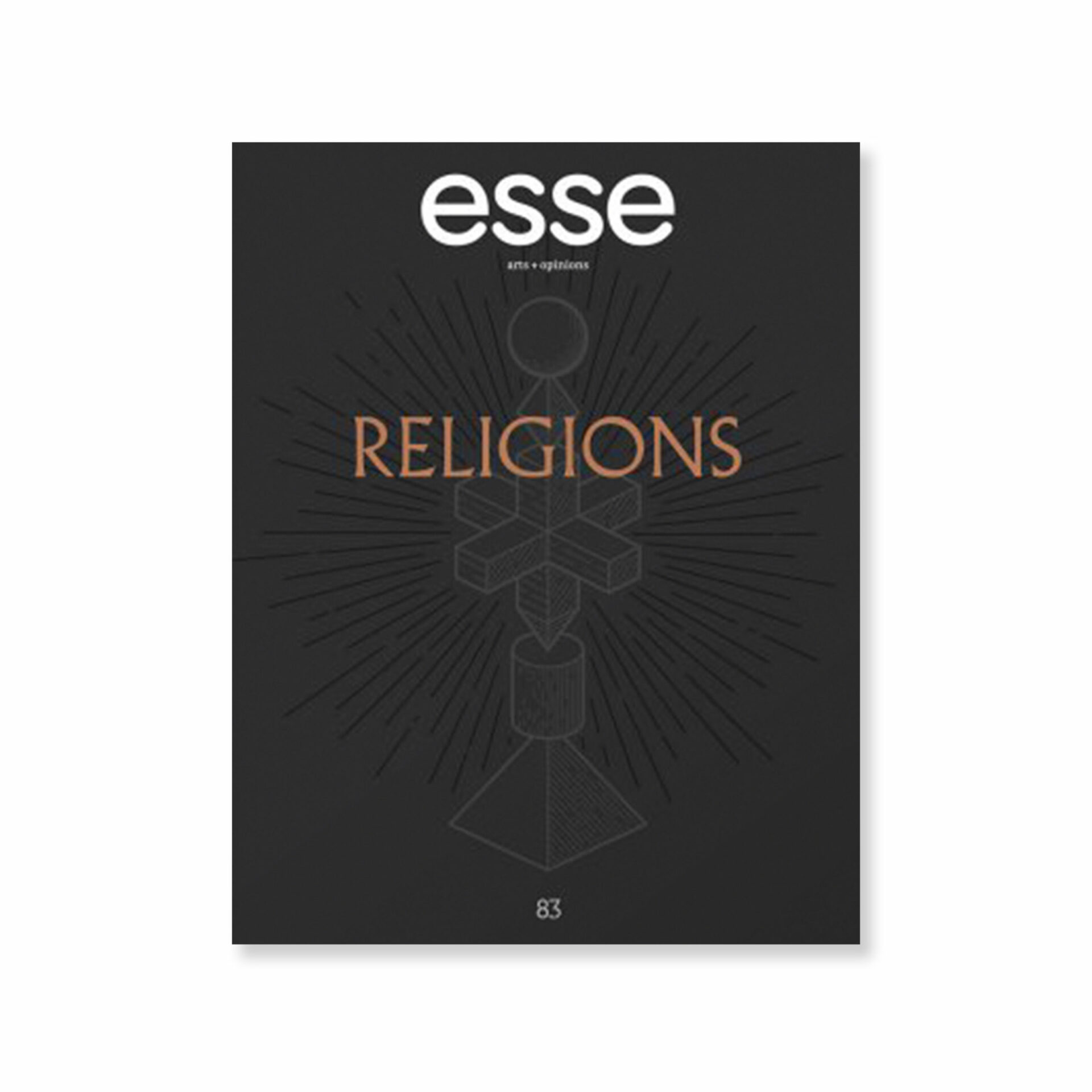The Prevalence of Religion
By turns repressive and repressed over the centuries, even today religion continues to provoke numerous debates, and esse decided to explore how these ideas are reflected in the field of the visual arts. In this context, we have deliberately bypassed questions concerning “spirituality in art” or the experience of the sacred to look instead at the political, social, philosophical, and aesthetic issues that religion raises in contemporary art practices. The artists featured in this issue create fictional works with a critical or humorous slant; borrow, subvert, or combine religious codes; make direct or symbolic references; or reproduce certain rituals. They address the theme of religion through situations that reveal the nature of its current significance.
In the opening essay of the thematic section, Boris Groys emphasizes that “every religion functions as a social and political representation of individual, private non-knowledge” — that is, religion is based on a faith that is impossible to prove, as “there can be no knowledge of God and His will.” Describing a parallel between religion and technology, Groys notes that the digital image is built by means of invisible codes that are as intangible and immaterial as God and that the image’s identity thus “remains a matter of faith.” The concept of faith is found elsewhere, in different forms, in a number of the essays in this issue: a faith that is confined neither to its religious sense nor to the meaning of belief — from which it is clearly distinct, according to philosopher Bruno Latour — but that maintains a relationship with the invisible and, by extension, the immaterial. This idea provides an opportunity to take a new look at how faith in the image is articulated in abstract works — in this case, faith in the relationships that unite images and their supposed referents (Rosamond).
The notion of ritual is also addressed in this issue — not through the sacred or cathartic dimensions that are often attributed to it, but through an exploration of the mechanisms of codified gestures and acts that, in a way, trace the territory of those who perform them (Desmet). Considering their wide coverage in the media these days, the thorny question of territory and the affirmation of a cultural and religious identity might have featured prominently in an issue bearing on religions. Instead, they are inscribed very subtly, through practices that, although imbued with a certain critical positioning, also demonstrate a desire for intercultural or interreligious dialogue. The work of Mehdi-Georges Lahlou, presented in the portfolio, offers a good example of this intermingling of religious, cultural, and sexual identities.
The thematic section ends with an in-depth look at the religious foundations of the contemporary imagination. In this regard, the artists and authors who reflect on the present reveal that our uneasy relationship with time is still anchored, in part, in theological thought, notably by the appropriation of ancient mythologies (the goddess Gaia) or through the themes of apocalypse and paradise lost, notions that certainly convey today’s anxieties and the collective fantasies to which they are joined. However, if we follow the thought of Bruno Latour, whose positions are analyzed in Bordeleau’s essay, the most profound meaning of apocalypse is not necessarily catastrophe, but “the certitude that the future has changed shape, and that we can do something.” [Translated from the French by Käthe Roth]
